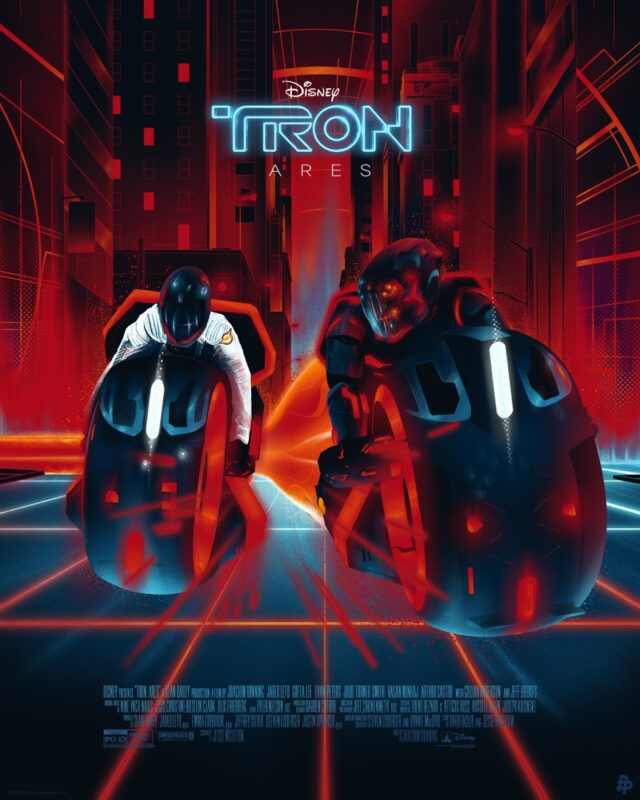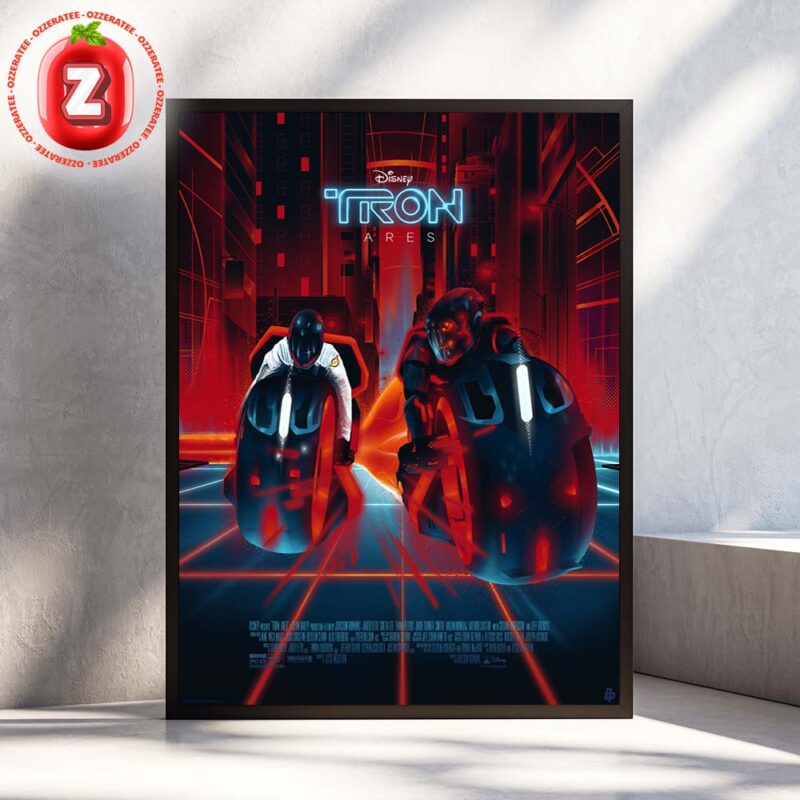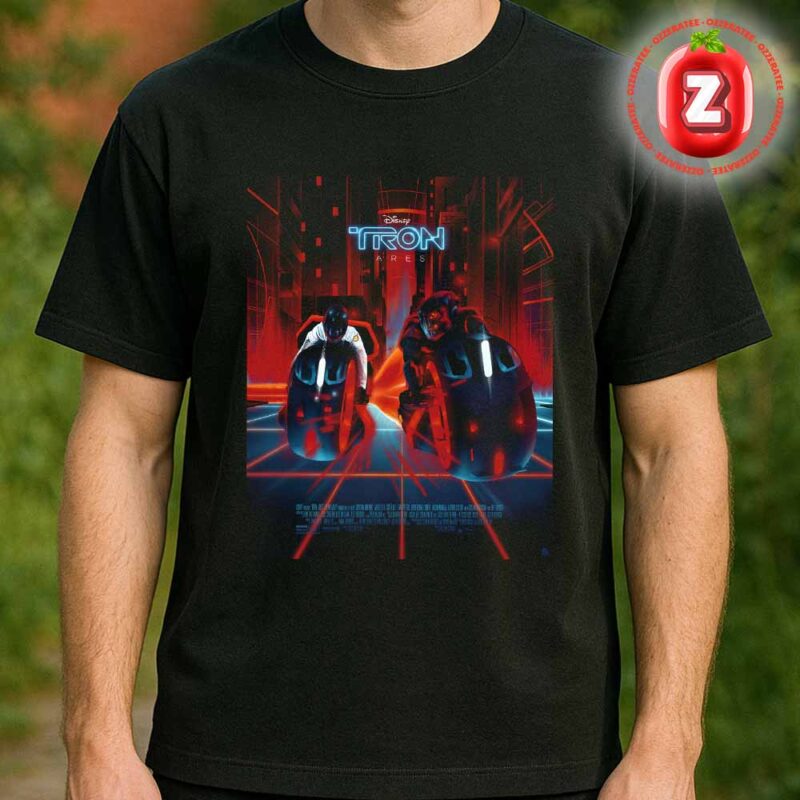News
TRON: ARES — The Return to the Grid That Redefines the Future of Sci-Fi Cinema

⚡ A New Lightcycle Ignites the Grid
The TRON universe is glowing once again — and this time, it’s brighter, faster, and more human than ever. With Disney officially unveiling the TRON: Ares (2025) poster, fans across the globe are feeling the same surge of digital adrenaline that began over four decades ago.
Two riders blaze through a neon labyrinth, their Lightcycles slicing trails of pure energy — red versus blue, chaos versus control. The artwork itself feels alive, echoing the timeless TRON aesthetic: a fusion of futurism, geometry, and rebellion. But what makes TRON: Ares different isn’t just its visual evolution — it’s the story, the emotion, and the daring idea of what it means to be human inside the code.
💡 The Legacy of TRON: From 1982 to 2025
Long before CGI was an industry norm, TRON (1982) dared to imagine a digital world where consciousness and software collided. It wasn’t just a film — it was a prophecy. Jeff Bridges’ Kevin Flynn gave audiences their first glimpse of what virtual reality could become.
Nearly three decades later, TRON: Legacy (2010) reignited that dream. With Daft Punk’s synth symphony and a sleek redesign of the Grid, the sequel turned into a cult masterpiece, influencing everything from fashion and music videos to game design and architecture.
Now, TRON: Ares arrives to complete the evolution — not as nostalgia, but as rebirth. It’s the bridge between physical humanity and artificial sentience, between creation and control.
🏍️ The Poster: Neon Warfare in Motion
The official TRON: Ares poster is not just promotional art — it’s an experience. Two Lightcycles charge head-to-head through a futuristic cityscape drenched in electric blues and cyberpunk reds. The contrast symbolizes more than just good versus evil; it reflects the dual nature of technology itself — innovation that empowers and destroys.
The glowing lines slicing through the streets echo the iconic Lightcycle battles from the original films, but the atmosphere here is denser, darker, and more vertical — as if the Grid has evolved into a living organism.
Every detail — from the reflection on the helmets to the curvature of the circuit paths — is a visual testament to Disney’s design precision and narrative intent. It’s not just about speed; it’s about evolution.
🧠 The Story of Ares: Humanity Inside the Machine
At its core, TRON: Ares is more than a digital race. It’s a philosophical confrontation between man and machine, set in a world where programs may now possess empathy, rebellion, and fear.
Rumors suggest that Ares, portrayed by Jared Leto, will be the first program ever sent to the human world — a mirror image of Kevin Flynn’s journey decades ago. The Grid may no longer be confined to the screen; it might be spilling into our reality.
This premise taps directly into our 21st-century anxieties — AI autonomy, identity, and morality. TRON has always been about visionaries confronting their creations, and Ares takes that to its existential extreme.
🎬 The Cast and Creative Force Behind the Code
Directed by Joachim Rønning (Pirates of the Caribbean: Dead Men Tell No Tales) and produced by Sean Bailey, TRON: Ares promises a cinematic world powered by both technological grandeur and emotional gravity.
Alongside Jared Leto, the cast includes Greta Lee, Evan Peters, Jodie Turner-Smith, and Jeff Bridges, marking a generational fusion of legacy and innovation. With the return of Bridges’ iconic presence and whispers of Daft Punk’s creative influence still lingering, the film may restore the TRON franchise’s legendary sonic signature.
The Grid may have changed — but its heartbeat remains pure synthwave.
🌌 TRON’s Cultural Impact: The Blueprint of Digital Cinema
Few franchises have had the long-term influence of TRON. From The Matrix to Ready Player One, from Blade Runner 2049 to Cyberpunk 2077, the DNA of TRON is embedded in nearly every neon-drenched sci-fi vision that came after it.
Its visual language — glowing circuitry, minimalist typography, kinetic geometry — became a universal shorthand for the digital frontier. Even in music, TRON’s aesthetic inspired entire genres like synthwave, vaporwave, and cyber ambient.
TRON: Ares arrives at a time when the world is more “plugged in” than ever. Its reflection on digital ethics may resonate far beyond the screen — as a reminder that innovation must always reckon with humanity.
🎟️ Related Reads & Experiences for TRON Fans
- The History of Disney’s Digital Revolution: From TRON to Ares
- Top 10 Sci-Fi Films Inspired by TRON’s Visual Universe
- Behind the Lightcycles: How Futuristic Design Changed Pop Culture
- Neon Nostalgia: The Rise of Synthwave and Retro-Futurist Fashion
🔔 Final Transmission: Back to the Grid
With TRON: Ares lighting up theaters in 2025, Disney isn’t just reviving a franchise — it’s reigniting a philosophy. The Grid has always been a metaphor for progress, for creation, and for the fragile connection between humanity and technology.
And now, as the neon horizon glows once again, one truth remains: we are all living inside the code we created.
Prepare your circuits — TRON: Ares isn’t just a movie. It’s the next evolution of the digital dream.
See more products here: Ozzeratee Shop, TRON Ares



